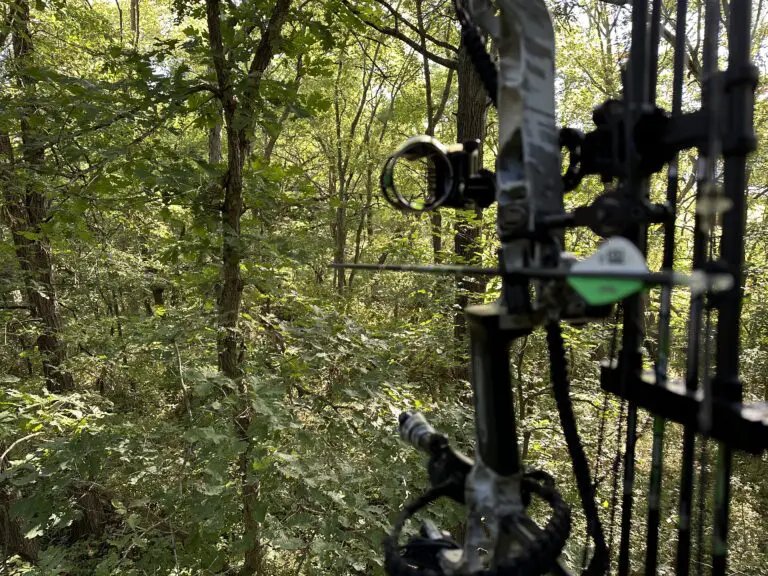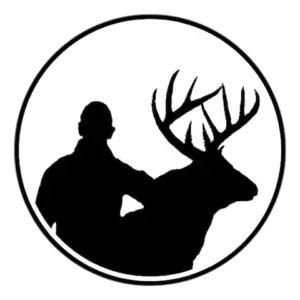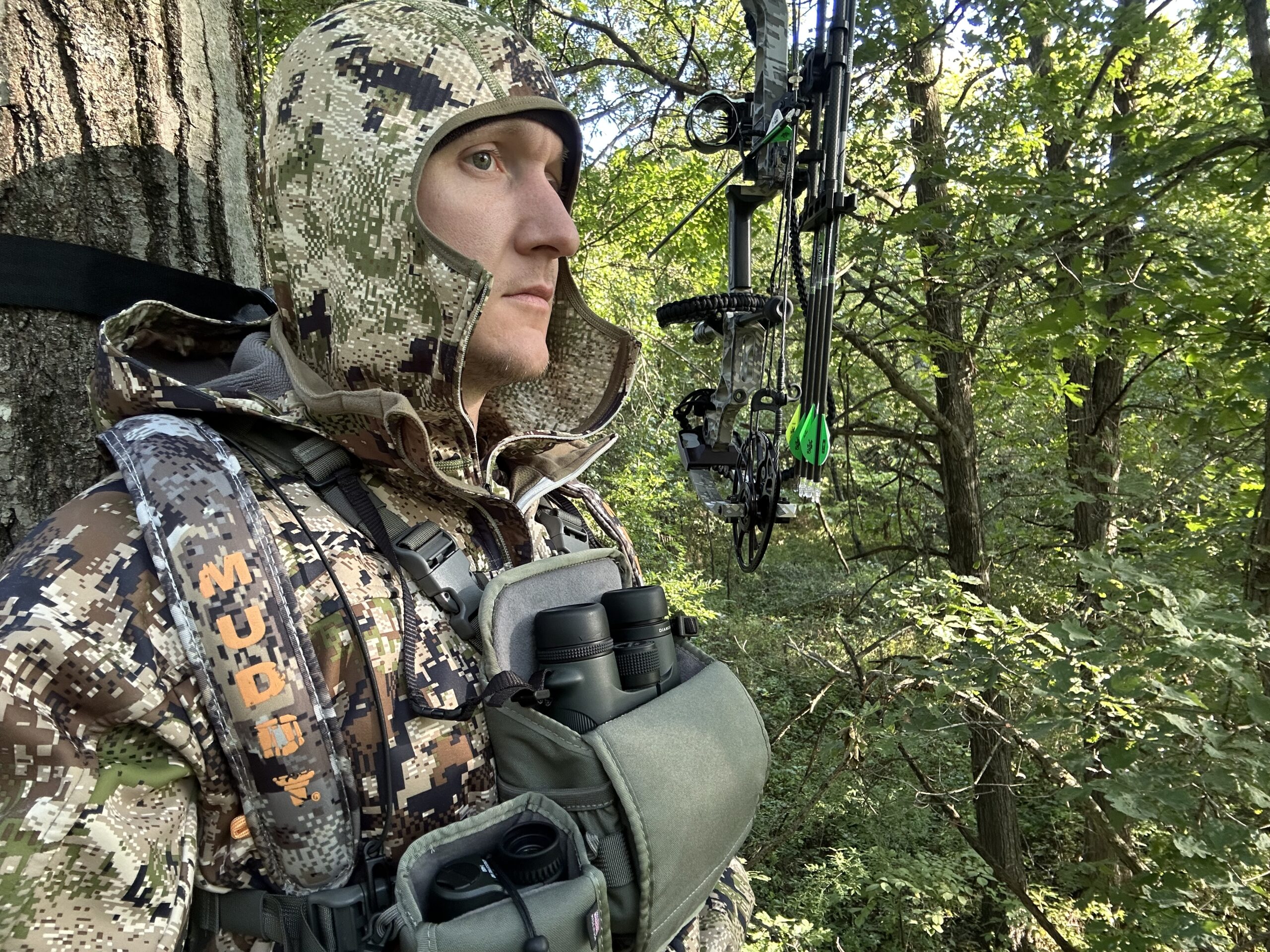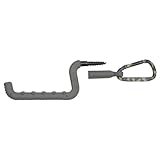I have tried just about every method possible for hanging a bow in the tree for a deer hunt. After years of trial and error, I’ve learned which products and methods work the best based on my specific hunting styles.
The best place to hang a bow is where it’s convenient for you to reach it. Most hunters hang their bow from a bow hanger that’s attached the tree they are hunting in or their stand.
In this article, I’m going to offer several tips and methods for how to hang a bow in the stand based on various hunting styles. These tips will hopefully help you avoid common problems and mistakes that bow hunters make when hanging their bow.
Tip #1: Use a bow hanger
I recommend using a bow hanger so you don’t have to hold your bow for the entire hunt. It’s also convenient to have something that can hold your bow while digging through a backpack, rattle antlers together, or just standing up to stretch.
I do a lot of hunting with my bow on my lap, especially during the rut when bucks can be chasing does. However, I don’t prefer to hunt like that if I’m sitting in an uncomfortable stand or doing an all-day hunt. Having a bow hanger to hold your bow is a nice luxury to have by your side.
Tip #2: Use a bow hanger that fits your style of hunting
For fixed stand hunting, like ladder stands and hang-ons, I primarily use a bow hanger that screws into the tree (if I have permission to do so).
For mobile hunters, keep things as simple as possible when getting set up in the tree for a deer hunt. For example, you can attach a permanent bow hanger to your stand. This will keep you from having to install and remove a bow hanger, or from accidently leaving it in the woods.
Tip #3: Hang your bow so it’s easy to reach while sitting down
When using a bow hanger that’s attached to the tree, I like the grip on my bow to be hanging at the same height as my head. This allows me to easily grab the bow while sitting down.
Standing up and grabbing a bow creates unnecessary movement. I’ve had deer sneak up on me a few times which forced me to be extremely cautious when reaching for my bow. If you can grab your bow without standing up, it’s much easier for you to keep your movements hidden from deer while preparing to take a shot.
I hang my bow on the left side of my body since I’m a right-handed shooter. I keep it on the left side of my body so that I don’t have to switch hands on the grip before I shoot.
Tip #4: Position the bow hanger so it can’t get in the way of your shot
When using a bow hanger that attaches to a tree, don’t hang it too low or else it can get in the way of your shot.
If you’re attaching a bow hanger to your stand, install it on the edge of the stand. You should be able to move around on the stand and have enough space between your feet in order to maintain balance while shooting.
Tip #5: Position the bow hanger so your bow doesn’t accidently fall to the ground
Many hunters use screw-in bow hangers that have two or three hinges, allowing them to fold. If the arm is folded over towards the left side, it’s possible that the weight of the bow can create enough force to start unscrewing the bow hanger from the tree. If that happens, your bow could fall to the ground.
Screw the arm in the tree so that it’s pointing straight away from the tree and level with the ground.

Tip #6: Hang the bow so your arrow isn’t touching anything
Don’t let anything touch your arrow when the bow is hanging in the bow holder. Arrows can easily get unattached from the bow if they snag something like branch, vegetation, or backpack.
Don’t put yourself in a position to spook deer because your arrow hits or snags something as you grab it.
Tip #7: Avoid using screw-in bow hangers if not hunting your own land
Many public lands don’t allow hunters to screw into trees or cut branches. Also, some private landowners don’t want their trees to be screwed into either. Don’t assume you can just screw into a tree unless you have permission. Instead, just install a bow hanger on your stand or use a bow hanger that straps around the trunk of the tree.
Tip #8: Avoid buying bow hangers that can make noise
Many bow hangers have a hinge or movable part. These movable parts can eventually become noisy after the first year or so, depending on the specific bow hanger you decide to purchase. For example, I bought a bow hanger called “Third Hand Treestand Bow Rest” which ended up being extremely squeaky after the first season. I don’t suggest buying those. I threw mine in the trash.
Buy a bow hanger that has a rubber coating on the part where your bow will be touching. Avoid hanging your bow on a screw-in step because of the metal-on-metal contact. Metal-on-metal increases the likelihood of accidentally making noise that can scare deer away.
Tip #9: Avoid buying screw-in bow hangers that don’t have sharp threads or teeth
Don’t be surprised if you can’t get a screw-in bow hanger to thread into a tree if you buy one with dull teeth or threads. It won’t matter how strong you are if you decide to screw it into a hardwood tree. I’ve learned this one the hard way.
Tip #10: Buy one of these bow hangers
I saved the best tip for last. There are a few specific bow hanger products that I recommend using because they will help you avoid running into problems that I mentioned throughout this article.
For fixed stand hunting, I recommend buying the Cranford EZY Double Arm Hanger (if you have permission to screw into the tree). If you don’t have permission to screw into the tree, then buy the My Bow Buddy Hi-Profile Bow Holder.
For mobile stand hunting, I recommend most hunters buy the My Bow Buddy Regular Bow Holder. With that being said, I personally use a Lone Wolf Custom Gear bow hanger because it’s a custom-made bow hanger for my Lone Wolf Custom tree stand.
Another great option for mobile hunters and saddle hunters is to hang your bow on a Hawk Tree Hook or a small accessory hook.







